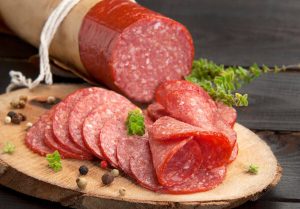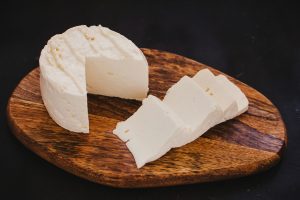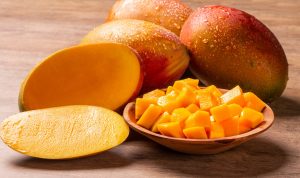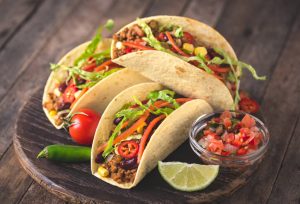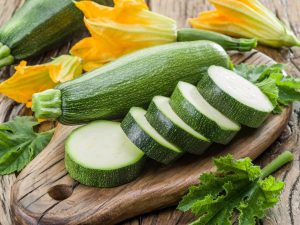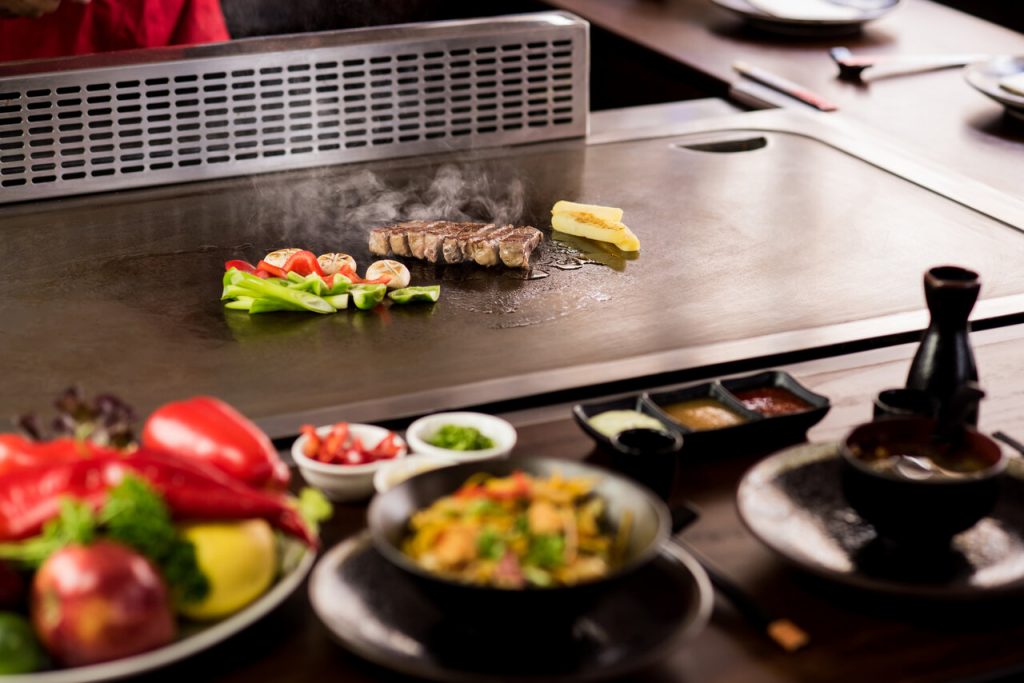
Love Japanese cuisine? Then you might be familiar with Japanese restaurants that cook food right in front of you. You may know these as teppanyaki or hibachi restaurants. However, many find these two confusing. In the U.S. alone, the phrase “hibachi-style” is occasionally used to refer to what is really teppanyaki cooking. So, what is the difference between the two? If you’re curious to know the distinctions between teppanyaki vs hibachi, then read on! We got you a quick breakdown below.
What’s the Difference Between Teppanyaki vs Hibachi?
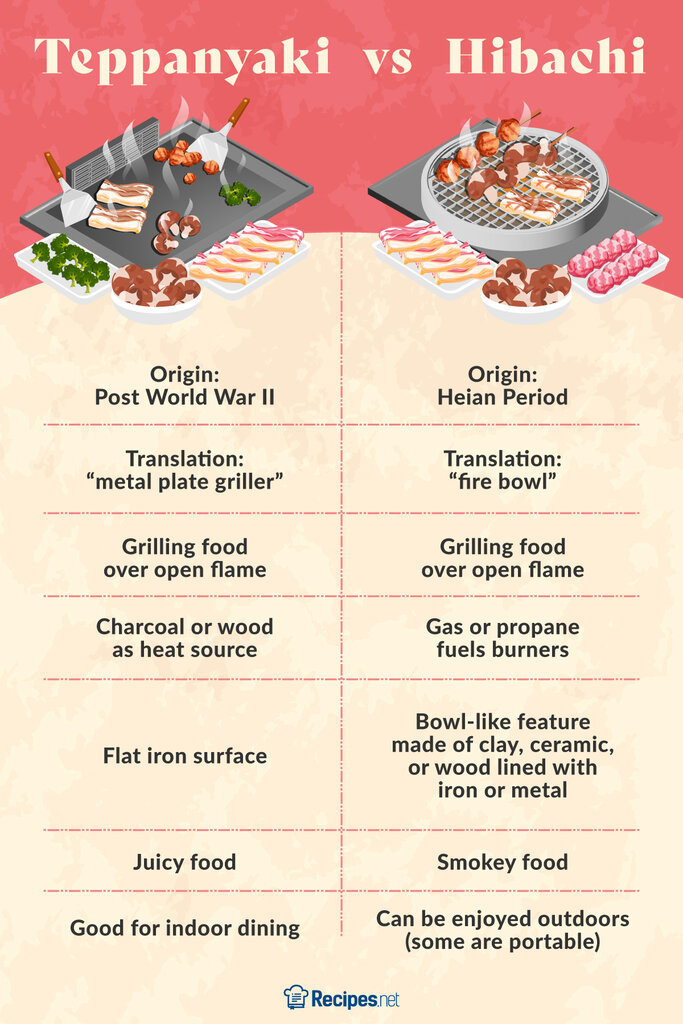
Nothing is more fun than eating grilled food while downing some sake bombs with your friends and family. But what if we tell you that you can enjoy performative cooking with your loved ones while doing so? Yes! That’s one of the fun and exciting parts of restaurants that employ teppanyaki and hibachi techniques. A professional chef will prepare your food in front of you, coupled with tricks and gimmicks to keep you entertained.
Now, what are the differences between these two cooking styles? Is teppanyaki cooking the same as hibachi? Well, the West, especially in the United States, finds teppanyaki and hibachi confusing. Most usually think they are the same thing.
However, aside from both cooking techniques involving grilling vegetables, meat, or seafood, there are a lot of differences between hibachi and teppanyaki. We listed them below for you to find out!
Hibachi Is Older Than Teppanyaki
Hibachi and teppanyaki both originated in Japan. However, hibachi is considered to be the Japanese’ traditional way of grilling compared to the more modern teppanyaki.
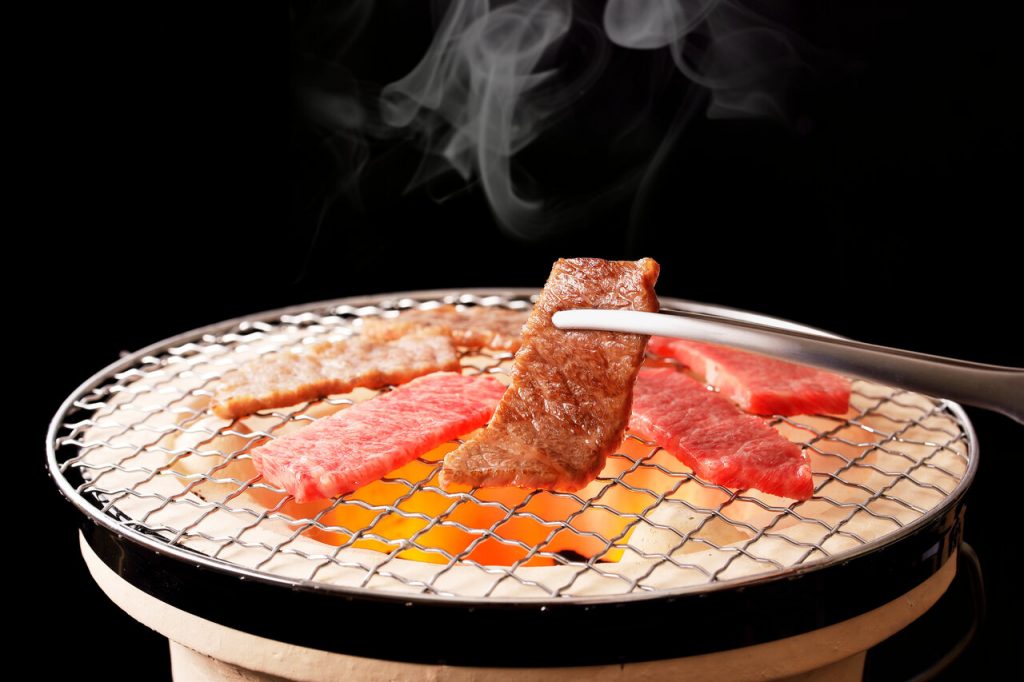
Hibachi grill
Hibachi, also called shichirin, was prevalent during Japan’s Heian period. It was said to be used not only for grilling but also for heating during winters and as a built-in stove for boiling tea or water in a pot.
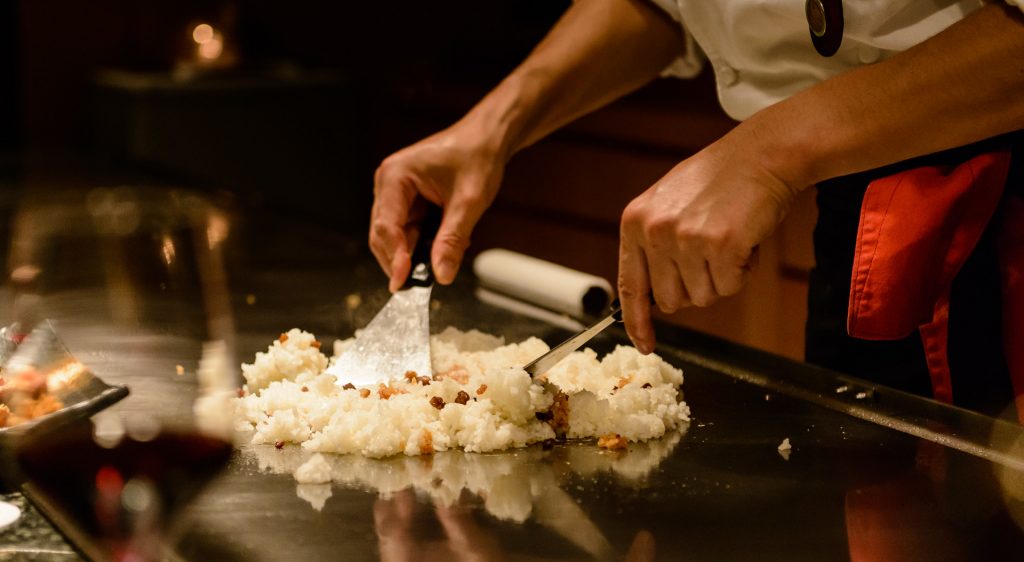
Frying rice the teppanyaki way
Nick Hamatake | Flickr
Teppanyaki, on the other hand, only emerged in Japan Post-World War II. It was brought to the United States in the early 1950s when Japanese chefs went overseas to teach Japanese-style cooking to foreigners. As Asian-American restaurants slowly emerged in America, Japanese chefs retained this cooking style. It helped attract diners as Westerners enjoy watching their food prepared in front of them.
Hibachi and Teppanyaki Use Different Cooking Techniques
Japanese hibachi grills are portable bowl-like or pit-style grills while teppanyaki grills are flat iron griddles or surfaces.
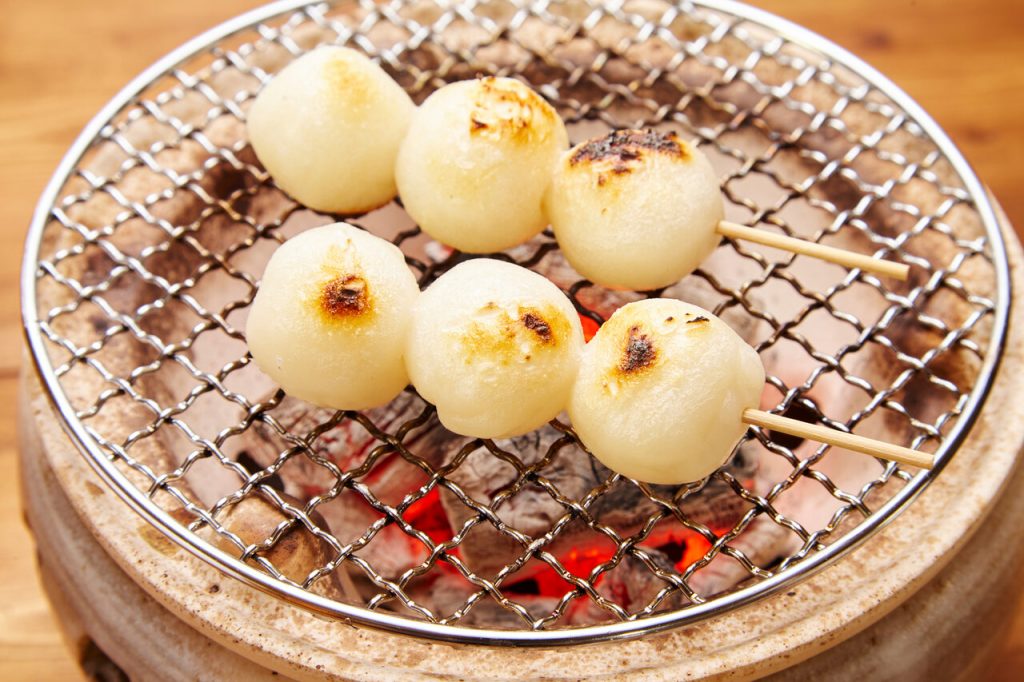
Hibachi-style grilling
Hibachi means “fire bowl” in Japanese, derived from the large clay bowls used in its early versions. Now, hibachi grills are ceramic and wood lined with iron or other types of metal. Putting a wire rack on top of it is crucial as it is where you can place food like meat and seafood to grill. The heat comes from the ignited wood or charcoal. This is the main reason why dishes cooked in this style have a nice smokey flavor.
Some notable dishes cooked using this technique are hibachi chicken and spicy grilled fish. As stated earlier, chefs in hibachi restaurants perform tricks while cooking. One example is the famous onion volcano. In this trick, they stack onion rings from largest to smallest and ignite them to look like a flaming earth wonder.
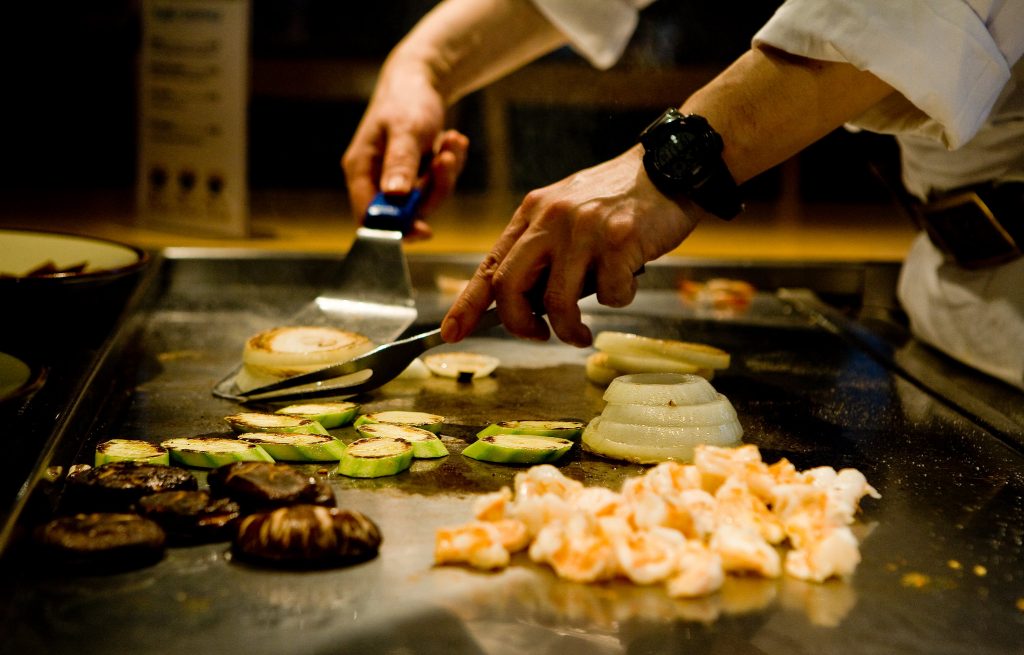
Teppanyaki-style of cooking
Nick A | Flickr
Teppanyaki, on the other hand, came from the words “teppan” meaning “metal plate” and “yaki” which means “grilled” in Japanese. It uses propane gas to heat the flat surface where food is cooked.
With that, chefs prefer to cook thick meat slices using this grill type. This is because it has a broader surface with a temperature that can be evenly controlled. Dishes cooked using this style are tasty because they cook using their own juices. The best example is grilled meat paired with different dips and sauces like this yum yum sauce.
Like hibachi-style, teppan chefs also display their entertaining culinary skills in front of the diners.
Teriyaki vs Yakiniku vs Teppanyaki vs Hibachi
Teriyaki is another cooking style that uses the broiling method. Yakiniku, on the other hand, pertains to the cooked grilled meat itself.
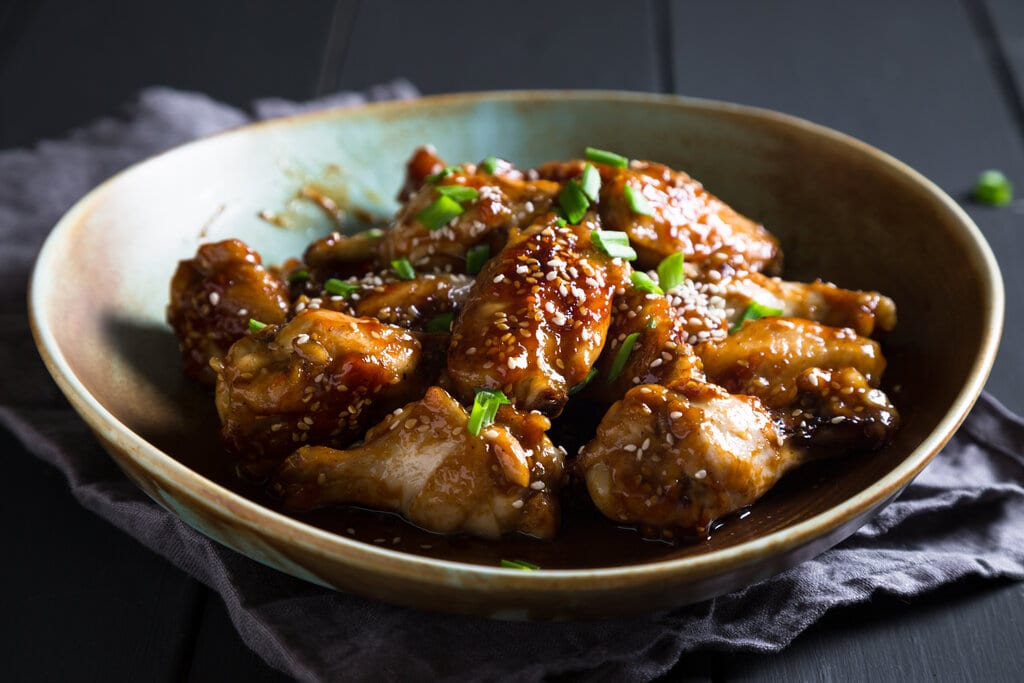
Teriyaki chicken wings
Teriyaki means “glossy broiled” in Japanese. It is because the food cooked using this technique is heavily glazed with teriyaki sauce made from soy sauce and sake or mirin. This technique usually uses meats and poultry, giving them a sweet and tangy flavor with an underlying hint of umami. This is a little different from the juicy and flavorful dishes made through teppanyaki and the smokey ones from hibachi. Want to give teriyaki a try? Start with this easy-to-follow stir-fried pork teriyaki recipe.
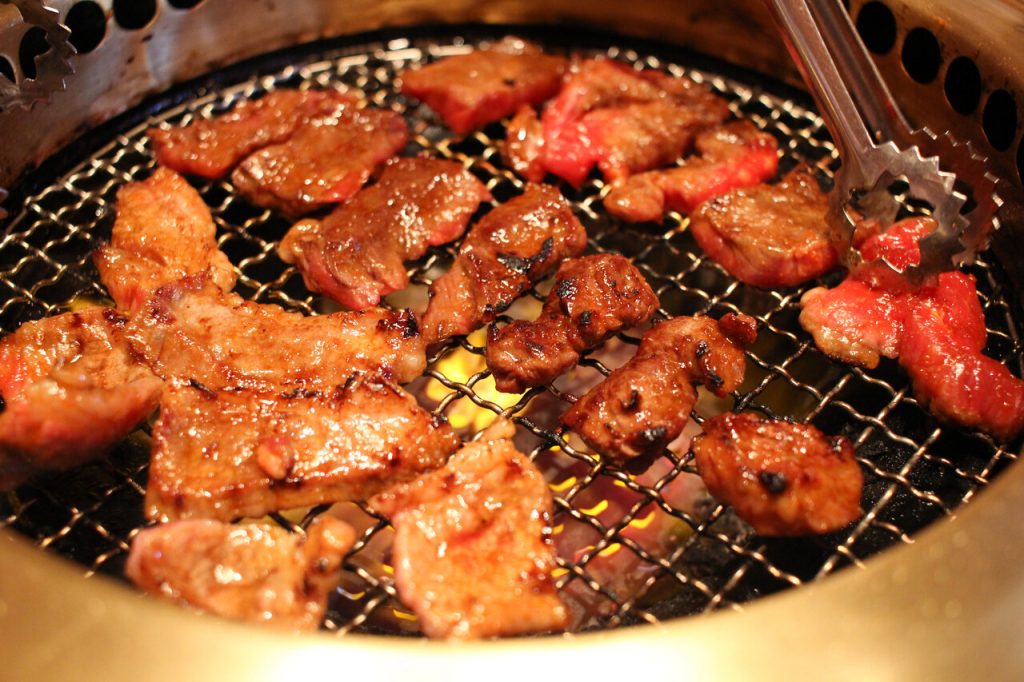
Yakiniku or Grilled food
Yakiniku, on the other hand, does not refer to a cooking technique but rather to the food itself. It means “grilled food” in Japanese and is essentially the Japanese version of barbeque. To enjoy, Japanese chefs serve these together with a dipping sauce made of light soy sauce, sugar, acid from fruit juice, sesame, and sake to make it more flavorful.
Read Also: 11 Best Sake Substitutes For Japanese Cooking
Frequently Asked Questions
Can you put a pan on a teppanyaki grill?
Yes, you may! Some cooks use pots or pans when grilling fish or vegetables with other meat to lower the cooking temperature and avoid overcooking them. However, it is inefficient when it comes to boiling water or soups. Unlike your typical stove where you place your pan directly on a heat source, the burners in a flat iron griddle heat the iron surface first before the pan.
It may also cause issues with your flat iron griller if you are not using the right pan or pot. There are some types of pans that take time to warm up. Some tend to amass all the heat from the griddle, resulting in uneven surface temperature.
Which is more expensive, teppanyaki or hibachi grill?
Teppanyaki grill is more expensive than hibachi grills, especially the big, commercial-quality ones typically used in restaurants. Aside from that, it is also hard and a bit pricey to maintain them.
Is teppanyaki famous in Japan?
Before its prevalence in the West, teppanyaki style of cooking was not that popular in Japan. However, as it gained the interest of foreigners around the globe, teppanyaki style of grilling also boosted its popularity locally in Japan, leading to the rise of teppanyaki restaurants in the country.
Teppanyaki vs Hibachi: Differences Summarized
Hibachi embodies Japan’s traditional way of grilling, while teppanyaki is a more modern, innovative approach. They use different cooking tools and techniques that produce food with different tastes (hibachi on the smokey side, while teppanyaki with juicier ones).
But still, one thing is certain, whether it’s the teppanyaki way or hibachi-style, you will definitely go home happy and satisfied, not only because of the good food you’ve had but also because of the fun and entertaining experience you’ve shared with others whether you’re with your family or a group of friends. The performance provided by the professional chefs will definitely delight you and give you a deeper appreciation for food.
Was this page helpful?
Read Next: 18 Indian Desserts You Can Make At Home
